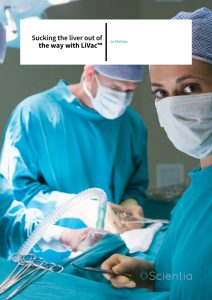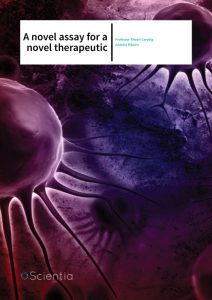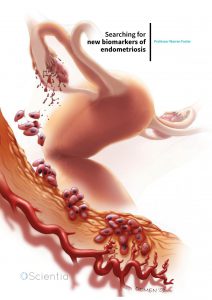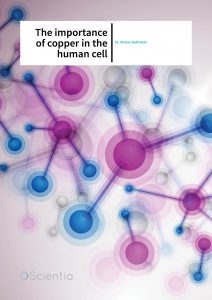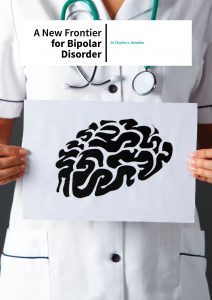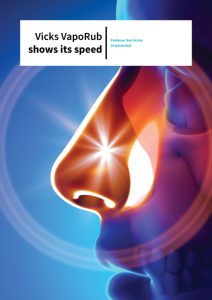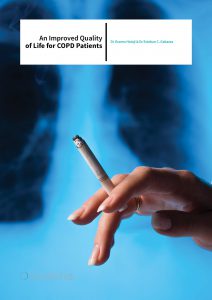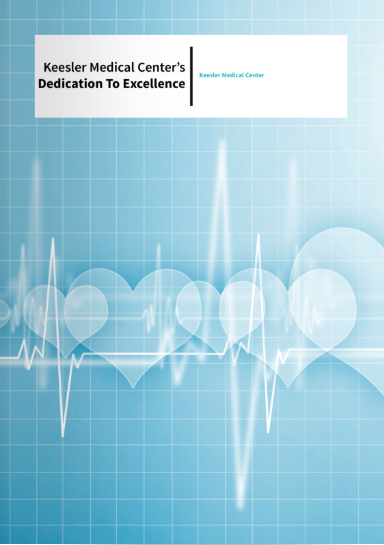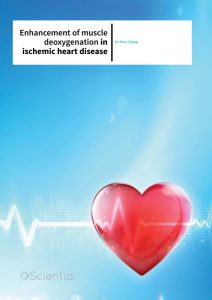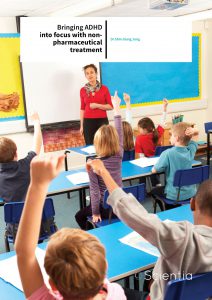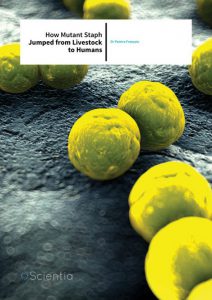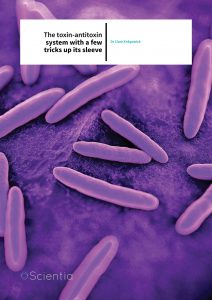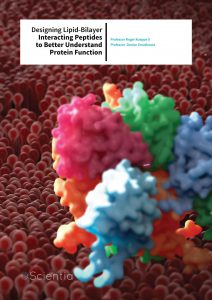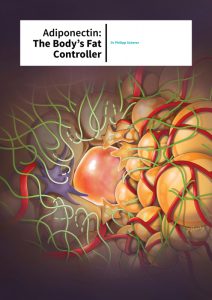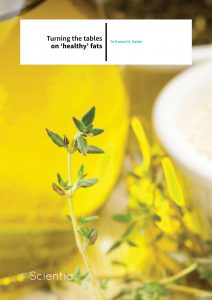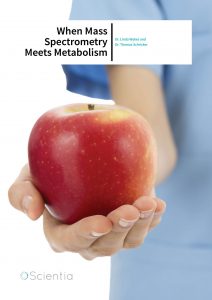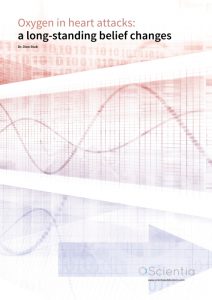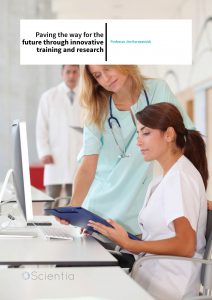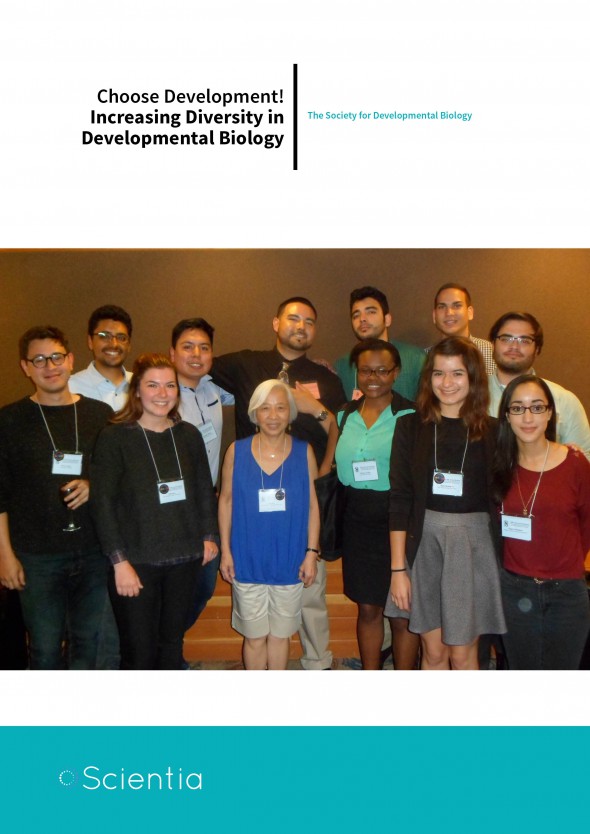Scientia Issue #106
BREAKTHROUGHS IN BIOSCIENCE
Our healthcare continues to be transformed at an accelerating pace due to breakthroughs in bioscience research. Even in the past 50 years, our life expectancy worldwide has skyrocketed – people born this year can expect to live on average around 15 years longer than those born in 1966. We are enjoying healthier, longer lives as a direct result of scientific advances in vaccines, diagnostics, pharmaceutical and non-pharmaceutical treatments, surgery, nutrition and medical technologies such as drug delivery, medical imaging and radiotherapy.
In this edition of Scientia, we pay homage to the scientists behind our ever increasing quality of life by showcasing the latest in biomedical and biological research from around the world. To open the edition, we have had the pleasure of speaking with Professor Melanie Welham, the Interim Chief Executive of the Biotechnology and Biological Sciences Research Council, in an exclusive interview about the BBSRC’s activities in supporting and promoting biological sciences in the UK and further afield. From here, we dive into the flourishing field of biomedical technology, where we highlight the latest in stem cell technologies and biomedical devices. In this section we also feature an interview with Nagesh Rao – Chief Technologist, and Chris McNeal – Presidential Management Fellow of of the Small Business Administration (SBA), who describe the ways in which the SBA’s SBIR and STTR programs help small companies commercialise innovative biomedical technologies.
Throughout the issue we highlight the immense importance of medical diagnostics and nutrition to our health and wellbeing, along with how scientific advances in both pharmaceutical and non-pharmaceutical healthcare continue to improve our lives. Here we feature projects ranging from the search for biomarkers of endometriosis to the investigating the ‘healthiness’ of different fats in our diet, and helping children overcome the symptoms of ADHD using sensory-motor integration training. However, our innovations in medicine have not come without a price – in this edition we also discuss the rise of the super-bug, and feature three research projects dedicated to understanding and defeating drug resistance in bacteria. To close this edition of Scientia, we celebrate the continuity of bioscience research, by featuring three training programs, called CaRTT, PEL and Choose Development!, each designed to prepare the next generation of bioscientists for careers in research.
CONTRIBUTORS FROM:

CONTACT
Published in the UK,
by Science Diffusion ltd
ISSN 2059-8971 (print)
ISSN 2059-898X (online)
E: info@sciencediffusion.com
W: www.sciencediffusion.com
W: www.scientia.global
tweet us on twitter
follow us on facebook
Meet The Team…
DIRECTOR
Nick Bagnall
nick@sciencediffusion.com
EDITOR-IN-CHIEF
Nelly Berg
nelly@sciencediffusion.com
PUBLICATION MANAGER
Nick Powers
npowers@sciencediffusion.com
DESIGN MANAGER
Mimi Jones
CONTRIBUTING WRITERS
Conn Hastings, PhD
Allan West, PhD
Alma Ionescu, BSc
Kate Stewart, BSc
Mary Ziegler, PhD
Margaret Unkefer, MSc
Maaike van Gerwen, MD
Merlin Walter, PhD
Jacob Monash, PhD
Alia Radwan, MD
Share
Scientia Issue #106 Contents
BBSRC – THE BIOTECHNOLOGY AND BIOLOGICAL SCIENCES RESEARCH COUNCIL
An exclusive interview with Professor Melanie Welham of the BBSRC
SBA – THE SMALL BUSINESS ADMINISTRATION
An exclusive interview with Nagesh Rao and Chris McNeal of the SBA
SUCKING THE LIVER OUT OF THE WAY WITH LiVac™
Dr Phil Gan
A new biomedical device for laparoscopic surgery
A NOVEL ASSAY FOR A NOVEL THERAPEUTIC
Professor Rhodri Ceredig and Andreia Ribeiro
A new technique for measuring the immunosuppressive potency of MSCs
SEARCHING FOR NEW BIOMARKERS OF ENDOMETRIOSIS
Professor Warren Foster
Finding a reliable biomarker of endometriosis could result in a less invasive diagnosis
THE IMPORTANCE OF COPPER IN THE HUMAN CELL
Dr Sharon Ruthstein
Exploring the biological pathways of copper using EPR Spectroscopy
A NEW FRONTIER FOR BIPOLAR DISORDER
Dr Charles Bowden
Better assessment tools for bipolar disorder and for improving diagnostic criteria
VICKS VAPORUB SHOWS ITS SPEED
Professor Ron Eccles and Dr David Hull
Investigating the speed of nasal cooling and decongestion of Vicks Vaporub in cold sufferers
AN IMPROVED QUALITY OF LIFE FOR COPD PATIENTS
Dr Osamu Hataji and Dr Esteban C. Gabazza
Monitoring physical activity in patients with COPD before and after drug treatments
KEESLER MEDICAL CENTER’S DEDICATION TO EXCELLENCE
Keesler Medical Center
An introduction to one of the largest medical facilities in the United States Air Force
ENHANCEMENT OF MUSCLE DEOXYGENATION IN ISCHEMIC HEART DISEASE
Dr Shun Takagi
Improving post heart attack outcomes through aerobic exercise
BRINGING ADHD INTO FOCUS WITH NONPHARMACEUTICAL TREATMENT
Dr Shin-Siung Jung
Sensory-motor integration training at a treatment for children with ADHD
LEARNING TO HELP CHILDREN WHO HURT THEMSELVES
Professor Philip Hazell
Testing the effectiveness of developmental group psychotherapy in preventing self-harm
HOW MUTANT STAPH JUMPED FROM LIVESTOCK TO HUMANS
Dr Patrice François
Investigating how Staphylococcus aureus mutates and evolves
THE TOXIN-ANTITOXIN SYSTEM WITH A FEW TRICKS UP ITS SLEEVE
Dr Clare Kirkpatrick
Identifying new molecular pathways in bacteria which can be targeted by new antibiotics
DESIGNING LIPID-BILAYER INTERACTING PEPTIDES TO BETTER UNDERSTAND PROTEIN FUNCTION
Professor Roger Koeppe II and Professor Denise Greathouse
Designing and studying peptides that interact with model biological lipid-bilayer membranes
ADIPONECTIN: THE BODY’S FAT CONTROLLER
Dr Philipp Scherer
Studying the role of fat cells in our metabolism
TURNING THE TABLES ON ‘HEALTHY’ FATS
Dr Frances M. Sladek
Investigating the healthiness of soybean and coconut oil
WHEN MASS SPECTROMETRY MEETS METABOLISM
Dr Linda Wykes and Dr Thomas Schricker
Nutritional interventions in perioperative care
PAVING THE WAY FOR THE FUTURE THROUGH INNOVATIVE TRAINING AND RESEARCH
Professor Jim Koropatnick
An introduction to the CaRTT and PEL training programs
CHOOSE DEVELOPMENT! INCREASING DIVERSITY IN DEVELOPMENTAL BIOLOGY
The Society for Developmental Biology
Successfully increasing the diversity of students wishing to pursue careers in biology


